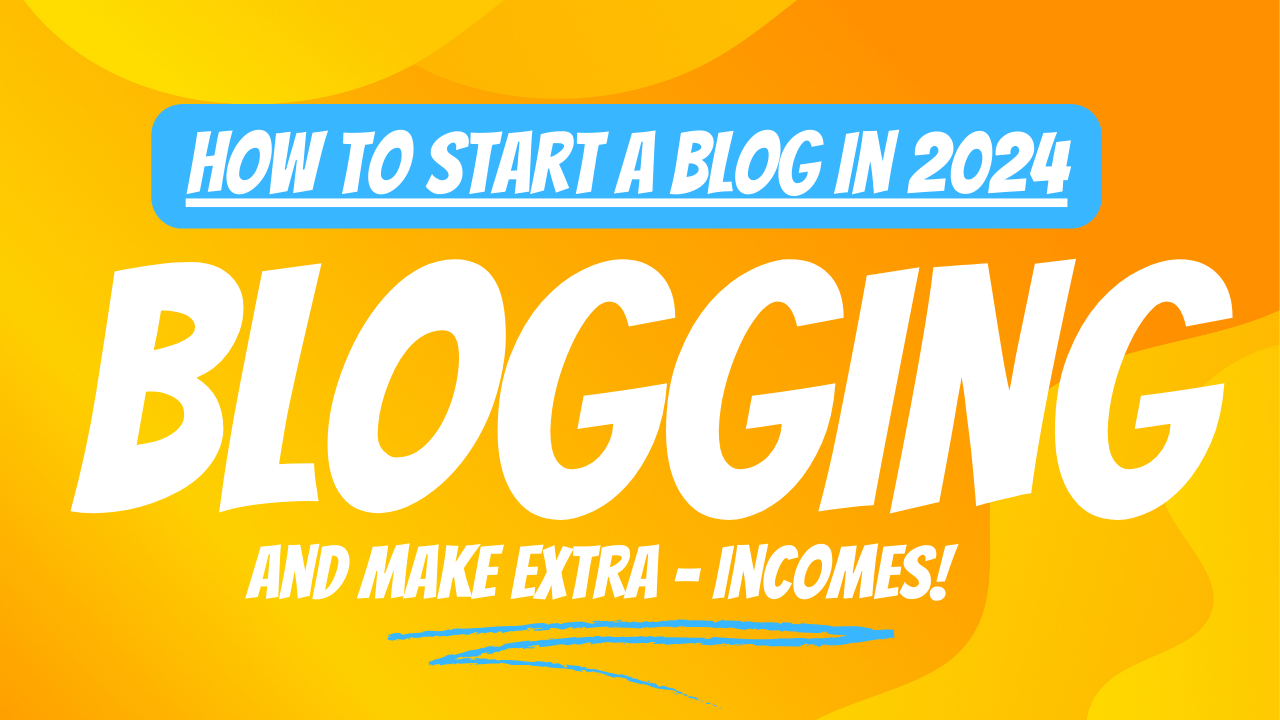
Why Do So Many Bloggers Fail in Their Niche?
Why Do So Many Bloggers Fail in Their Niche? With 2.75 million blogs published daily, standing out is tough. Discover why many bloggers fail and
With 2.75 million blogs published daily, standing out is tough. Discover why many bloggers fail and learn how to avoid common pitfalls to succeed in your niche.
Fill your requirements to get started
Introduction

Do you know how many blogs are published each day? WordPress statistics show that over 70 million new posts go live each month, which means about 2.75 million posts are published daily. With such staggering numbers, it’s no wonder that standing out and achieving blogging success is a tough challenge.
Every day, thousands of new bloggers start with dreams of making money online, but many struggle to succeed. Common pitfalls include poor research, lack of seriousness, unengaging content, ineffective promotion, and not offering something unique. In this article, we’ll explore these 5 major reasons why most bloggers fail and how you can avoid them to boost your chances of success.
Thousands of new bloggers ask me this question: “How should I pick a niche for my blog?” It’s a crucial question because your blog’s success is totaly depends on this decision.
Unfortunately, many people stumble here, either by choosing a broad topic or the wrong niche, which is why 99% of new bloggers not abe to earn a good amount and quit.
If you want to avoid that mistaes and find a money-making niche, follow these solid tips:
Select a topic that excites you and aligns with your knowledge. Your genuine interest will be evident in your writing, making your content more compelling and engaging for your audience.
Investigate if there is a strong demand for content in your chosen area. Utilize tools like Google Trends, keyword research platforms, and competitor analysis to gauge interest and search volume.
Evaluate the potential for monetization within the niche. Look for opportunities such as affiliate marketing, sponsored content, or advertising revenue to ensure your niche can be financially viable.
Assess whether the niche has long-term potential or is subject to fleeting trends. Opt for a niche that offers sustainable interest and growth, rather than one that may quickly become outdated.
Choosing the right domain name is crucial for your blog’s success. Here are the 6 golden rules I always follow to ensure you pick a domain name that’s memorable and effective:
Aim for a domain name that sticks in people’s minds. Short, catchy names are easier to recall, making it more likely that visitors will return to your site.
Avoid complex spellings or long words. A simple, straightforward domain reduces the risk of typos and makes it easier for users to find your blog.
If people can say your domain name easily, they’re more likely to share it verbally. This can boost word-of-mouth referrals and overall reach.
Choose a domain that can be turned into a strong brand. It should be unique and versatile, allowing for easy development into a memorable brand identity.
our domain name should give a hint about your blog’s content. A relevant name helps attract the right audience and improve your site’s visibility in search engines.
Before you get too attached to a name, check its availability. Make sure it’s not already taken and consider securing variations or related domain extensions to protect your brand.
“The first impression is the last impression”, that’s the mantra which helps you to become a sucessfull blogger. Great content is the heart of a successful blog. It’s what keeps people coming back for more. Here’s how to create blog posts that people love:
Our primary task is to identify what information is actually our audiance is looking , and share the information in very simple way.
We only need to pick subjects that our readers will find helpful and informative with latest possible piece of knowledze.
Use words that everyone understands. Imagine you're talking to a friend. Keep your sentences short and easy to follow.
People love stories. Share your experiences or the experiences of others in story format.
Images, videos, and infographics make your posts more interesting.
Break up your text to make it easier to read.
Step: 4 How to Give Blog A Design that Converts
A well-designed blog is more than just aesthetically pleasing; it’s a powerful tool for converting visitors into readers, subscribers, and customers. Here’s how to create a blog design that leaves a lasting impression:
Choose a Clean and Simple Layout
Prioritize Readability
Optimize for Mobile First .
Use High-Quality informative Images
Implement a Clear Navigation Menu
Create a Strong Call to Action
Manage Load Time it's matter a lot
If you're not a design expert, don't worry! There are plenty of tools to help you create a professional-looking blog:
WordPress Themes: Choose from thousands of pre-designed themes to match your style.
Page Builders: Use tools like Elementor or Divi to customize your blog's layout without coding.
Online Design Platforms: Canva and Adobe Express offer design templates and elements.
Make your blog look good for your readers. Try different styles to see what they like best. Keep the same look all over your blog.
Know Your Audience: Design your blog to appeal to your target audience's preferences.
Test Different Designs: Experiment with different layouts and elements to see what works best.
Maintain Consistency: Use a consistent color palette, typography, and style throughout your blog.
Creating compelling content is just one part of running a successful blog. To truly maximize your reach and effectiveness, you need to ensure your blog is optimized for search engines and equipped with the right tools to measure its performance. This step involves setting up SEO (Search Engine Optimization) strategies and integrating analytics to track your blog’s success. Here’s a guide to help you navigate this crucial phase:
Start by identifying the keywords and phrases your target audience is searching for. Use tools like Google Keyword Planner, Ahrefs, or SEMrush to find relevant keywords with high search volume and low competition. Incorporate these keywords naturally into your blog posts, titles, headers, and meta descriptions to improve your search engine ranking.
On-page SEO involves optimizing individual pages to rank higher and earn more relevant traffic. This includes writing compelling and keyword-rich titles, crafting engaging meta descriptions, using header tags (H1, H2, H3) appropriately, and optimizing images with alt text. Ensure that your content is well-structured and provides value to readers.
Google Analytics is a powerful tool that helps you monitor your blog’s performance. Set it up by creating a Google Analytics account and adding the tracking code to your blog. This will allow you to track metrics such as page views, user behavior, traffic sources, and conversion rates. Use this data to understand your audience better and make informed decisions about content and marketing strategies.
If you’re using a platform like WordPress, take advantage of SEO plugins such as Yoast SEO or All in One SEO. These plugins offer features like real-time content analysis, XML sitemap generation, and social media integration, which can simplify the SEO process and ensure that your blog follows best practices.
Keep your blog content fresh and relevant by regularly updating old posts with new information and optimizing them with current keywords. Search engines favor content that is up-to-date and offers ongoing value to readers.
Regularly review your analytics data to assess the effectiveness of your SEO efforts. Look for trends and patterns, such as which keywords are driving the most traffic or which pages have the highest bounce rates.

To enable monetization, start by ensuring you meet the platform’s eligibility requirements, which often include a minimum number of followers or views.
Next, set up your payment method in the platform’s monetization settings to receive earnings. Accept any terms and conditions and complete any necessary verification processes.
Once verified, activate the monetization features and configure the settings to match your preferences. Create content that adheres to the platform’s guidelines to ensure it’s eligible for monetization.
Finally, monitor your performance through the platform’s analytics tools and stay updated on any changes to the monetization policies.
We’ve just launched an exciting new feature that we know you’ll love. It’s designed to make your experience smoother and more enjoyable.
Curious to learn more? Click the button below to find out all the details!
Frequently Asked Question
To start a blog in 2024, follow these essential steps:
There are several ways to monetize your blog:
To optimize your blog for search engines:
The frequency of publishing new content depends on your goals and resources, but consistency is key. Here are some general guidelines:
Contact Our Consultants. Need more assistance? Save time by starting your support request online & we’ll connect you to an expert. Get started now with our Digital Experts.
The Path To Success Starts Here: Read Our Blog
Today!
Are You Prepared to Advance Your Understanding? Explore our engaging Blog for enlightening articles, useful advice, and stimulating knowledge on a range of topics.

Why Do So Many Bloggers Fail in Their Niche? With 2.75 million blogs published daily, standing out is tough. Discover why many bloggers fail and

You are here its means you need to know more about Links and Link Building? Do you know that 79.7% of SEOs consider link building

How to Start A Blog in 2024 And Make Money From It Tired of the 9-to-5 job ?and planing to start blogging and make a

Featured In

Blogging
SEO
Information
Copyright © Bloggers Pride 2024